The Best Homeschool Physics Curriculum is a series of pre-recorded online homeschool physics courses starting with Intro to Physics (Part 1), about Newton’s Laws of Motion and so-called classical mechanics. The online physics curriculum continues with Physics Part 2 about wave mechanics. It’s a year of high school level physics taught by Dr. Scott in a convenient, self-paced format featuring recordings of live lessons with a creative and fun teacher.
You won’t find complicated math problems here… just fun, approachable high school physics lessons.

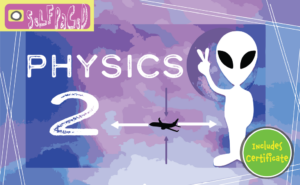
Get unlimited access to all of our high school science courses for a low monthly membership fee.
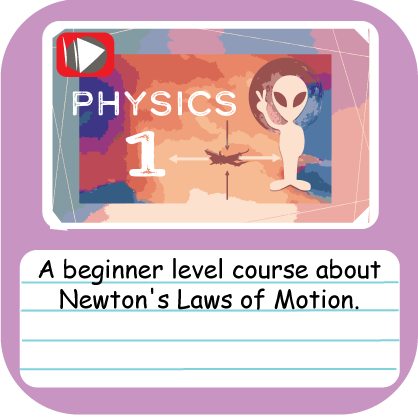

"Physics that is understandable with middle school math skills is EXACTLY what a traditional science education is missing. It's truly the best homeschool physics curriculum." -- Dan T
Intro to Physics (Part 1) will examine the forces creating motion in a Self Paced online course. If you can draw arrows, you can understand this course! Unlike a normal physics class, you won’t need an advanced understanding of algebra to master the physics concepts. We’ll do physics the fun way to cover Newton’s Laws of Motion, a truly classic topic sometimes called classical mechanics.
Physics Part 2: Waves has an entirely new set of 5 topics relating to conceptual physics for homeschool covering waves and flow. We’ll be discussing a lot about how liquids and gasses move, and how moving solids might not be as solid as you think! We’ll investigate the physics of lots of common, everyday examples like flowing water, springs, heat, light, electromagnetic radiation (EM waves), the weather, and, of course, ocean waves and tides.
We will start at the beginning, and learners will develop the skill to make scientific drawings and perform technical analyses.
We will analyze the forces and energies for everyday objects including balls, bicycles, cars, planes, skydivers, space ships, satellites, the moon, and even a catapult.
Our homeschool physics online course will discuss, analyze, and draw forces using arrows to represent the strength and direction of many common types of forces. We’ll talk about the practical significance of Isaac Newton’s Law that “every action has an equal and opposite reaction.” We will understand how balancing forces result in resting objects while unbalanced forces result in motion.
We will discuss the scientific concept of motion by introducing the terms speed, velocity, and acceleration. We will learn that gravity is a force that produces acceleration, that is falling objects increase their speed the further they fall. Objects accelerating is covered by the second of Newton’s Laws.
There are many, many forms of energy, that stuff that makes things happen. We will discuss two common forms called kinetic energy, the energy of motion, and potential energy, the energy of something at rest. We will discuss how energy is transformed between these forms, but never destroyed. We will introduce the concept of inefficiencies and energetic “losses” that happen in the real world.
The path of a flying object can be plotted precisely. The theory involves analyzing the transformation of potential energy into kinetic energy. We’ll use graph paper to plot some flight paths for common objects.
We will learn how gravity holds the solar system together. Planets stay in fixed orbits around the sun, and humans have created satellites to stay in orbit around our planet. We will conclude the course by accessing realtime satellite data feeds showing beautiful imagery of our Earth.
We will analyze the forces and energies for a variety of everyday waves in the continuation of Physics Part 1.
The first lesson is about electromagnetic radiation, commonly called EM waves. We focus on the use of EM waves in spectrometers for chemical analysis. We access satellite data sets and plot imagery taken from remote sensing (space based) spectrometers in the infrared (IR), visible (Vis), and ultraviolet (UV) bands.
We study ocean waves, tides, and the connection to gravity. We consider the effects of the sun and the moon on the ocean tides. We access data sets from ocean buoys tracking the tides and weather, and we plot the tides on a computer.
We use spring motion to understand the larger idea of sinusoidal waves. We use a computer to plot spring motion given the period and frequency of a spring. We connect the idea of spring-like mechanical wave examples to vibrations for solid objects.
We learn about heat energy and how heat flows from hot to cold. We learn about the 3 modes of heat transfer, known as radiation, conduction, and convection. We discuss ideal heat flow in solids and fluids, and we connect the idea to the formation of real-world coastal weather patterns such as the sea breeze, which is driven by solar heating. We access and plot real world atmospheric temperature data.
We study the pressure waves moving around the globe to explain the weather. We access and plot real world atmospheric pressure data sets and learn about weather maps.
Physics Part 1 is the first, beginner-level course in our sequence of Self Paced online physics courses. You’ll want to get started here.
Physics Part 1 is followed by Physics Part 2: Waves.
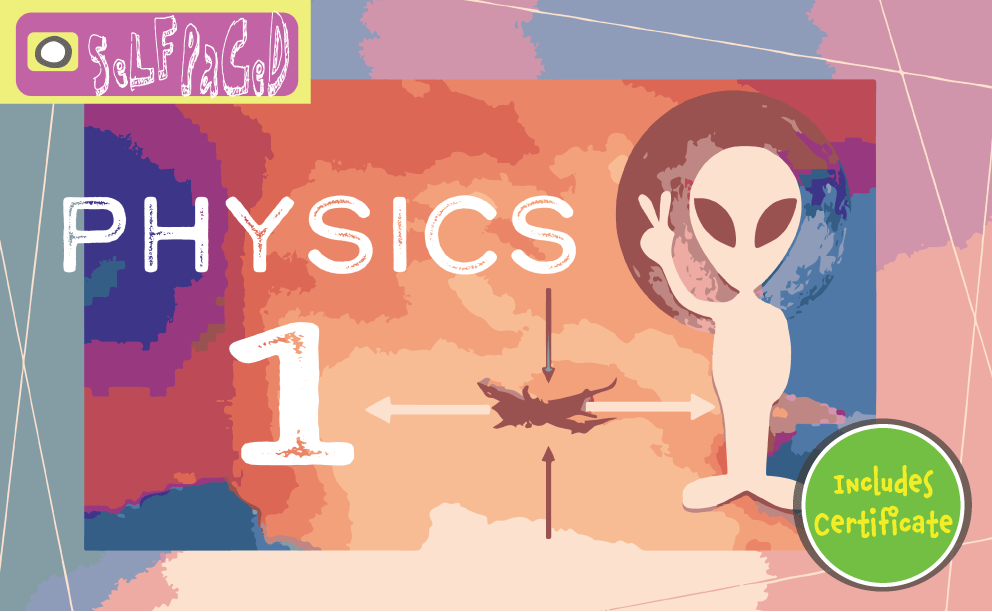
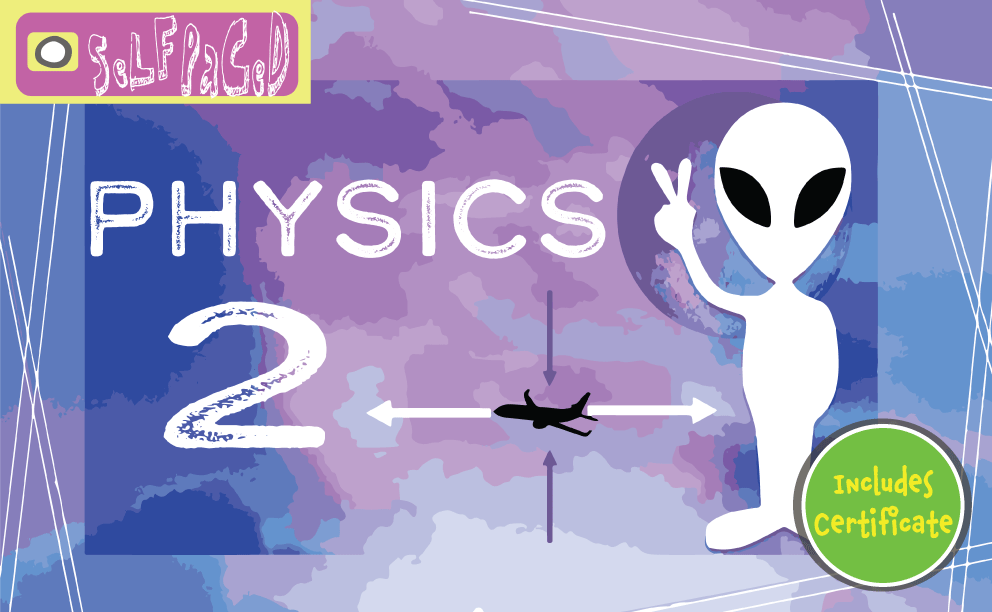
Self Paced Course: Move at your own pace to complete the lessons while receiving online teacher support.
Videos Included: The video textbook has around 150 videos, including complete physics lessons and detailed worksheet solutions.
Materials Included: The courses have 21 printable pdf files, including worksheets and class notes.
Time commitment: Learners typically spend 1-2 hours per week.
Course duration: Both parts make a full year of high school level physics, with a relaxed pace.
Instructor Support Included: Dr. Scott teaches the class. He is available for questions and evaluates worksheets by email. There are grades and a certificate of completion at the end.
Learners completing Introduction to Physics (Part 1) will be able to:
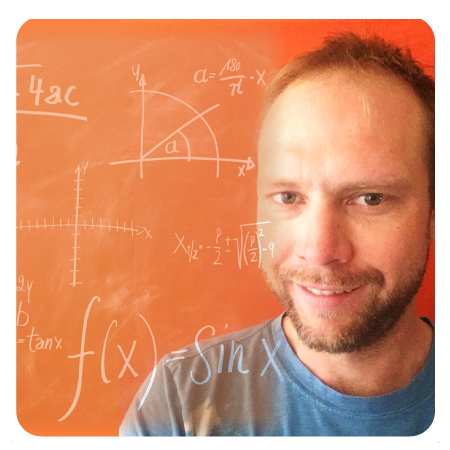
Hi, I’m Dr. Scott, the course instructor and author of the digital textbook that you get with the homeschool physics course series called Intro to Physics.
As a former college professor, engineer, and scientist, I think it’s really strange that most learners don’t get much physics until about their last year of high school, if at all. Physics is all around us. And it really doesn’t take tons of annoying math to appreciate it.
The focus of my physics homeschool curriculum is a practical physics education, and we’ll strategically avoid most of the complicated equations, weird math, and long calculations that plague the typical physics classroom.